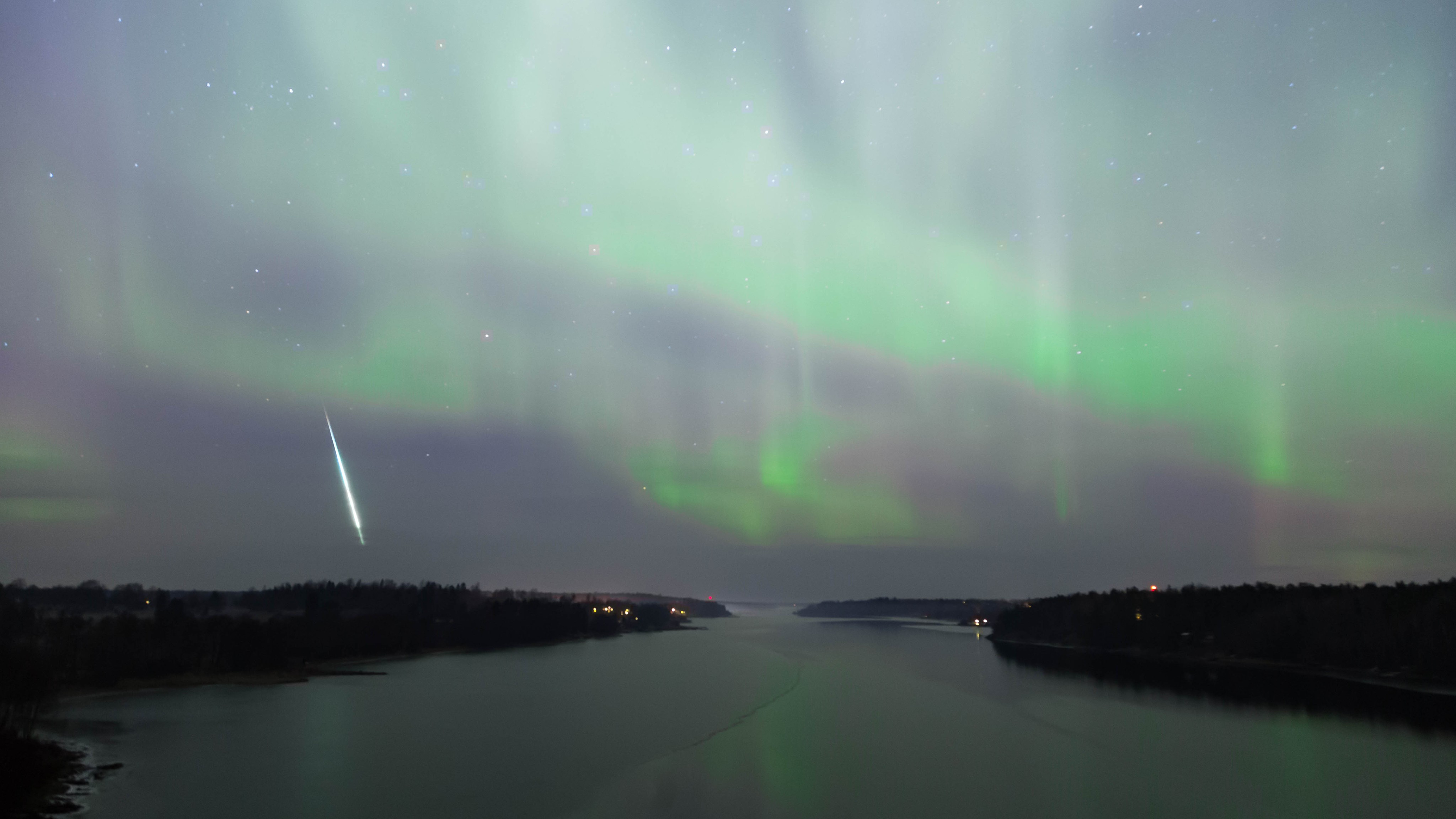Draconid meteor shower 2024: How to see dozens of 'shooting stars' fall from the dragon's tail this week
How to watch the Draconid meteor shower peak on Oct. 8 and 9 in the tail of a cosmic dragon.

On Tuesday and Wednesday (Oct. 8 and 9), the night skies may be peppered with "shooting stars" during the annual Draconid meteor shower.
Although it's not expected to be one of the year's best meteor showers, a special feature of the Draconids makes them hugely appealing to skywatchers: While most meteor showers are best observed in the early predawn hours, Draconid meteors can appear anytime after dark.
That's because their radiant point — the constellation from which they appear to originate — is Draco, the dragon, which can be found in the northern sky. Draco is a circumpolar constellation, meaning it appears to revolve around Polaris, the North Star, once every 24 hours. Draco is, therefore, always visible in the Northern Hemisphere under clear skies.
According to the American Meteor Society, the Draconids are a variable meteor shower, meaning a modest display of shooting stars is expected, with a slight chance of strong activity. The Draconids typically produce about 10 meteors per hour during the shower's peak, according to EarthSky.org. That makes the evening of Oct. 8 an excellent opportunity to go stargazing with the potential to see a few shooting stars.
Related: The best meteor showers of 2024 are yet to come. Here are the key nights to watch for.
As one of the largest northern constellations, Draco is best visualized this time of the year as a zigzagging serpent's tail, forming a vague Z shape above the Big Dipper in the north-northwest sky. The constellation is home to deep-sky sights, including the stunning Cat's Eye Nebula (NGC 6543), the Tadpole Galaxy (UGC 10214) and the Spindle Galaxy (M102), according to Constellation-Guide.com.
The timing for the peak of the Draconid meteor shower is favorable for skywatchers. On Oct. 8, a waxing crescent moon will be visible with Venus in the west, which will sink a few hours after sunset. That means it doesn't matter when you look north, since there will be little moonlight to bleach the sky.
Get the world’s most fascinating discoveries delivered straight to your inbox.
Like all meteor showers, the Draconids occur when Earth passes through a cloud of rocky debris left behind by a comet. In this case, that's Comet 21P/Giacobini-Zinner, which passes through the solar system and crosses Earth's orbit once every 6.5 years, according to NASA.

Jamie Carter is a freelance journalist and regular Live Science contributor based in Cardiff, U.K. He is the author of A Stargazing Program For Beginners and lectures on astronomy and the natural world. Jamie regularly writes for Space.com, TechRadar.com, Forbes Science, BBC Wildlife magazine and Scientific American, and many others. He edits WhenIsTheNextEclipse.com.


